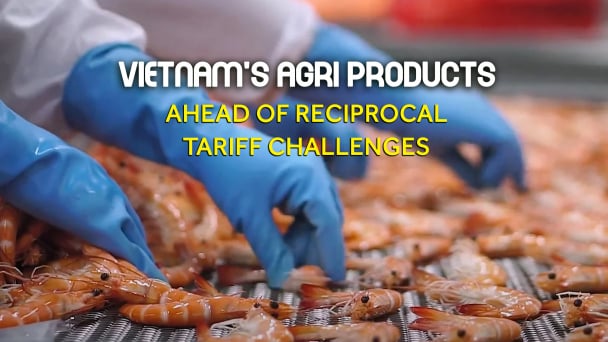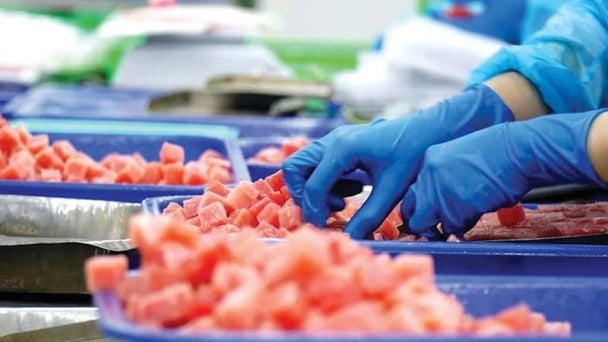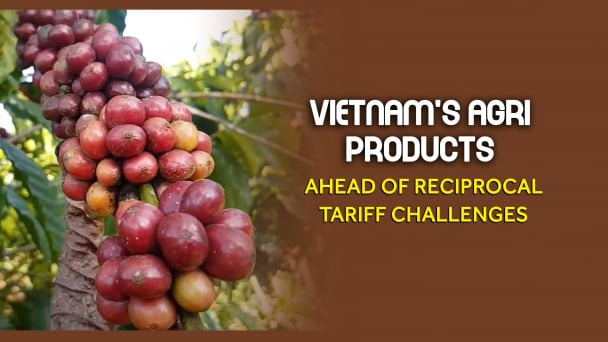May 31, 2025 | 09:24 GMT +7
May 31, 2025 | 09:24 GMT +7
Hotline: 0913.378.918
May 31, 2025 | 09:24 GMT +7
Hotline: 0913.378.918

Lao Cai province's cinnamon has been exported to 9 countries and is constantly reaching out to the international market. Photo: Luu Hoa.
Cinnamon is currently the main tree in Lao Cai province's afforestation structure. Every year, over 70% of the province's planted forest area is cinnamon, with total revenue of nearly VND 600 billion per year, and is the province's key export industrial tree.
In recent years, cinnamon has affirmed its position and brought high efficiency to people. In 2015, Lao Cai province had 11,198.5 hectares of cinnamon growing area. Up to now, the cinnamon growing area in the whole province is 45,000 hectares, an average increase of 5,634 hectares per year. There are 15 of 19 ethnic groups participating in growing cinnamon.
Lao Cai province has 11 factories processing and extracting cinnamon essential oil. The design capacity of processing facilities ranges from 4,000 to 36,000 tonnes of raw materials each year. Essential oil extraction technology applies steam extraction technology. The purchase volume of cinnamon products reached 52,375 tonnes each year.
The export market of cinnamon products in Lao Cai province is stable, including Singapore, India, Thailand, Malaysia, Bangladesh, Qatar, Lebanon, Israel, and Turkey. Cinnamon essential oil products have been exported to China, Sri Lanka, Europe, America, and domestic market needs.
To grow cinnamon sustainably, Lao Cai's agricultural sector has promoted propaganda and built models of organic cinnamon production. In Lao Cai province, there are currently 3,503 hectares of cinnamon that have been recognized as an organic growing area.
Currently, cinnamon processing enterprises tend to invest in cinnamon production and processing in Lao Cai towards creating an organic cinnamon product chain.
Tam Hoi Cooperative (a unit under Vietnam Tropical Products Co., Ltd.) in Bao Thang district (Lao Cai province) is one of Vietnam's leading businesses in processing and exporting high-quality cinnamon products. The cooperative can supply 3,000 tonnes of cinnamon of all kinds each year.

Improving the quality of cinnamon varieties is the orientation that Lao Cai is focusing on in the coming period. Photo: Luu Hoa.
By now, after only four years of operation, the cooperative's cinnamon purchasing facility has continuously expanded in factory production and export markets with a capital of up to tens of billions of dong. Processed cinnamon products with special requirements and standards have now met export requirements to 9 countries, including India, Singapore, Malaysia, Thailand, Bangladesh, Dubai, Lebanon, Israel, Turkey.
Recently, Lao Cai province has issued documents to constantly create favorable conditions for the development of agroforestry production, such as Resolution No.26/2020/NQ-HDND dated December 14, 2020, of the Provincial People's Committee Lao Cai on the Promulgation of some regulations and policies to encourage the development of agricultural production in the province of Lao Cai; Resolution No.10-NQ/TU dated August 26, 2021, of the Standing Committee of the Provincial Party Committee on the strategy of agricultural commodity development in Lao Cai province to 2030, with a vision to 2050...
However, according to the Lao Cai Department of Agriculture and Rural Development assessment, the investment and development of cinnamon trees in the province have faced many difficulties.
Specifically, the cinnamon seed source's quality is still not high. Varieties with genetic quality are improved insignificantly. There is no tree planting forest system. The seedling production technique is mainly based on the people's long-term experience, having no formal nursery technique.
The consumption of cinnamon products (shells, leaves) depends entirely on the traders. The association of cinnamon producers has not yet been established. People have just grown according to the movement, have not yet found groups/cooperatives to support each other in planting, tending, exploiting, and preliminarily processing products from cinnamon, so traders can put pressure on the growers.
Enterprises operating in the production, processing, and trading of cinnamon products have not yet coordinated and closely linked with the people to understand and rest assured to take care of the organic cinnamon area towards technicals. The cinnamon forest does not have a sustainable forest management certification (FSC). The forest area that meets the standards of organic cinnamon accounts for a low percentage.

Lao Cai promotes cinnamon exports associated with sustainable forest development. Photo: Luu Hoa.
To promote the potential of cinnamon, Lao Cai province has assessed the current situation and orientation of cinnamon production and business development in the province. In which the goal is to form a concentrated cinnamon growing area and develop sustainability with a scale of 52,000 hectares by 2030. At least 20% of cinnamon plantations will be granted FSC and organic by 2025, reaching 35% by 2030 and 70% by 2050.
Lao Cai province will research and apply science and technology from seed production to processing and consuming in an organic way. By 2050, over 50% of cinnamon products will be certified as organic and managed on a digital authentication system (QRS).
The cinnamon varieties to be planted must have a clear origin. Seedlings are produced at nurseries that meet the prescribed standards. Planting, tending and harvesting techniques comply with the Ministry of Agriculture and Rural Development standards and the actual conditions in the locality.
Regarding cinnamon processing and consumption in the 2021-2025 period, Lao Cai province will maintain the existing processing facilities, focus on investing in building cinnamon oil extraction facilities, specifically including one plant for deep processing of cinnamon essential oil with a capacity of over 500 tonnes of essential oil per year; two factories for deep processing of cinnamon bark, with a capacity of over 10,000 tonnes. Furthermore, in the 2026-2030 period, Lao Cai province will increase the processing capacity of cinnamon processing facilities.
In addition, Lao Cai province will also focus on studying the demand for post-processed cinnamon products and finding export markets for forest products, especially to the US and European countries.
Translated by Ha Phuc
/2025/05/30/5010-5-173638_943.jpg)
(VAN) On May 29, at the GO! My Tho Trading Center, the Tien Giang Department of Industry and Trade, in collaboration with Central Retail Corporation, held the opening ceremony of the 3rd Fruit Festival 2025.

(VAN) Reciprocal tariffs are exerting pressure on U.S. exports, prompting Vietnamese firms to shift their focus to Muslim markets, Thailand, and Brazil.

(VAN) A free booth for two years at Xinfadi, Beijing's largest wholesale market, will be allocated to Vietnam's agricultural products.

(VAN) Vietnamese shrimp exporters are actively looking for alternative markets and accelerating shipments to the United States in response to the pressure of impending reciprocal tariffs. This is occurring during a temporary tariff suspension.

(VAN) The import-export turnover between Vietnam and Singapore rose amid a trade rebound, with machinery, electrical equipment, and fuels making up the majority of the transaction value.

(VAN) Director General of the General Administration of Customs of China, Ms. Sun Mai Jun, has pledged to implement measures that will ease the import process for Vietnamese agricultural products.

(VAN) Although Vietnam is still increasing its coffee exports, the industry is currently in the process of determining market strategies in response to the U.S. imposition of reciprocal tariffs.